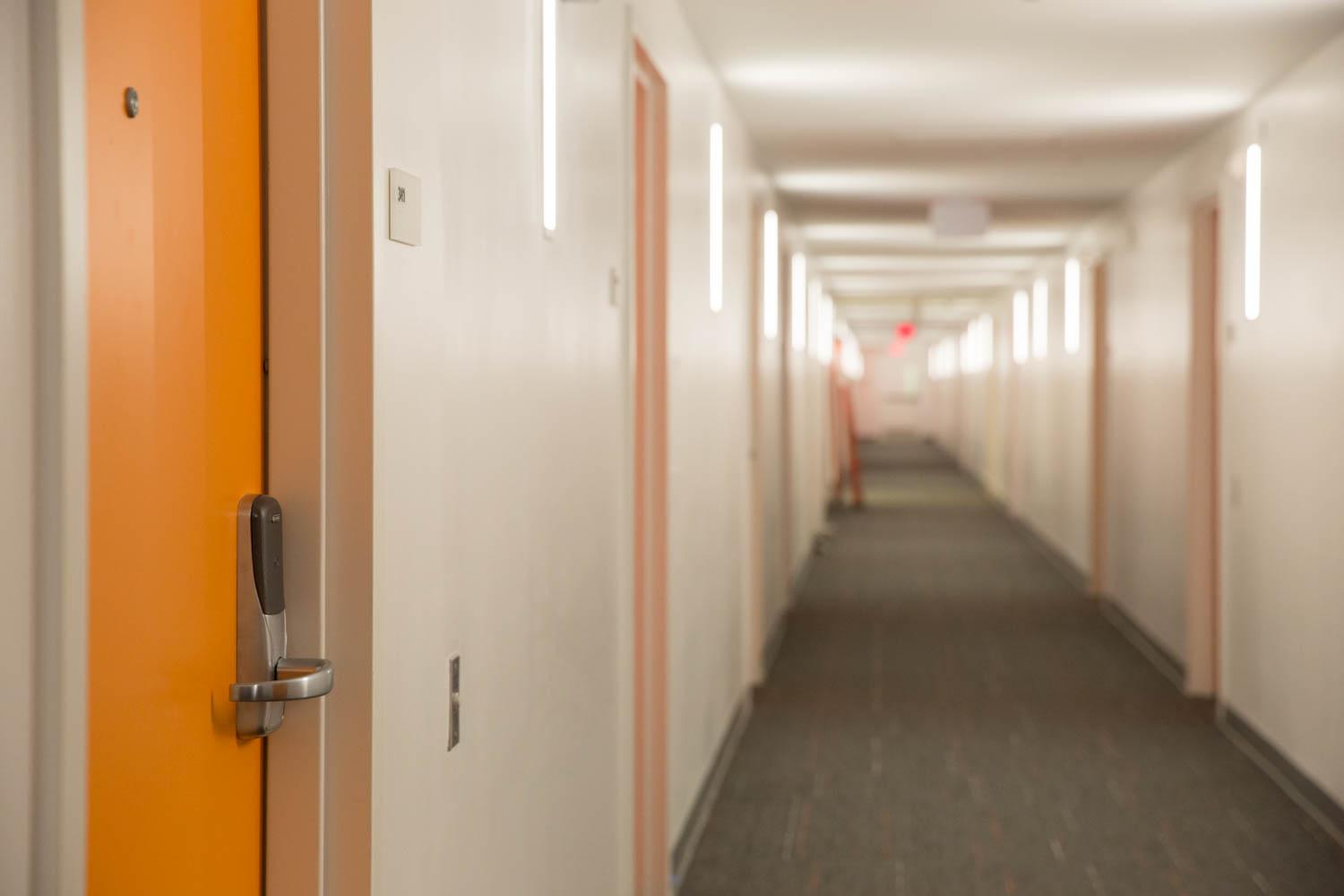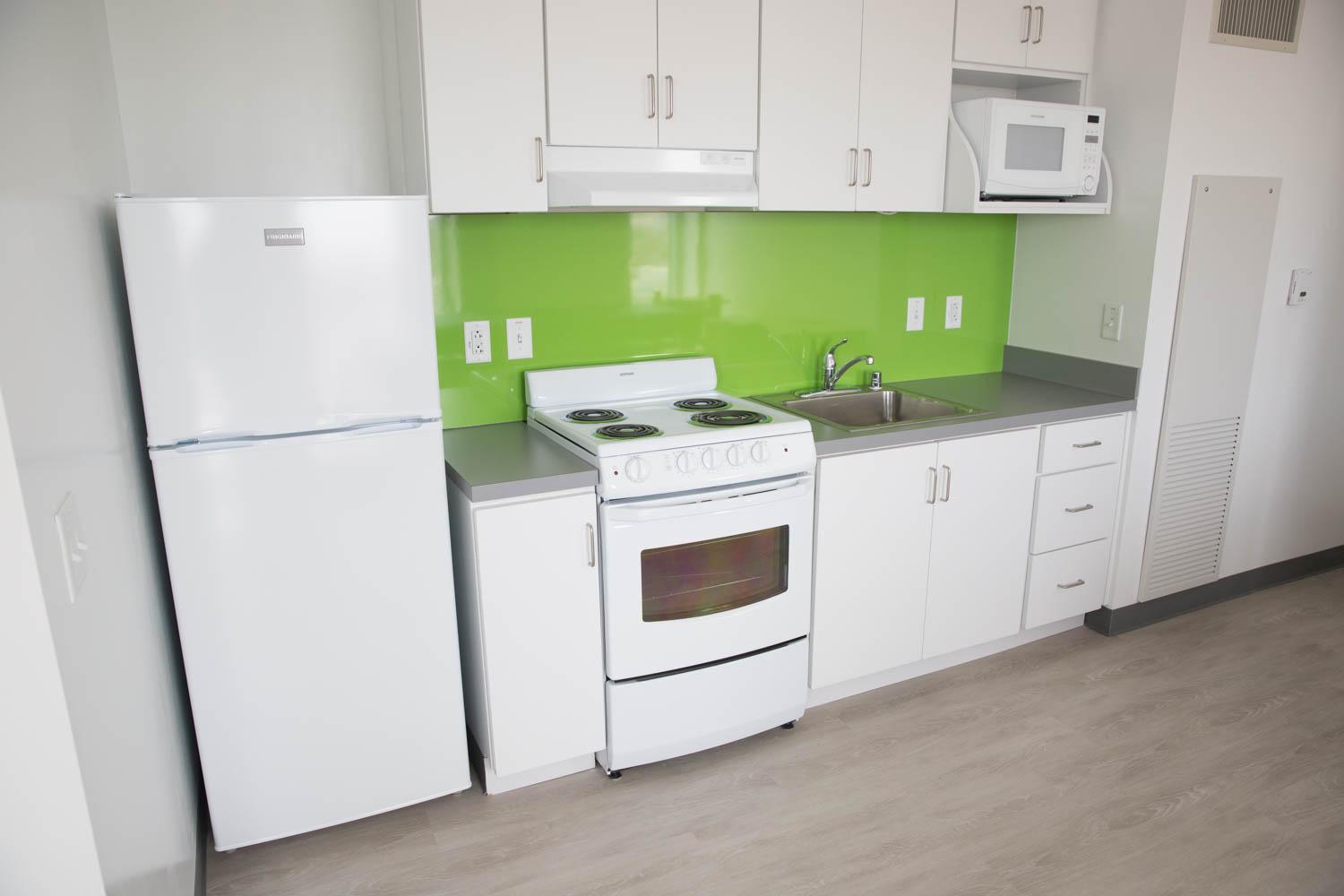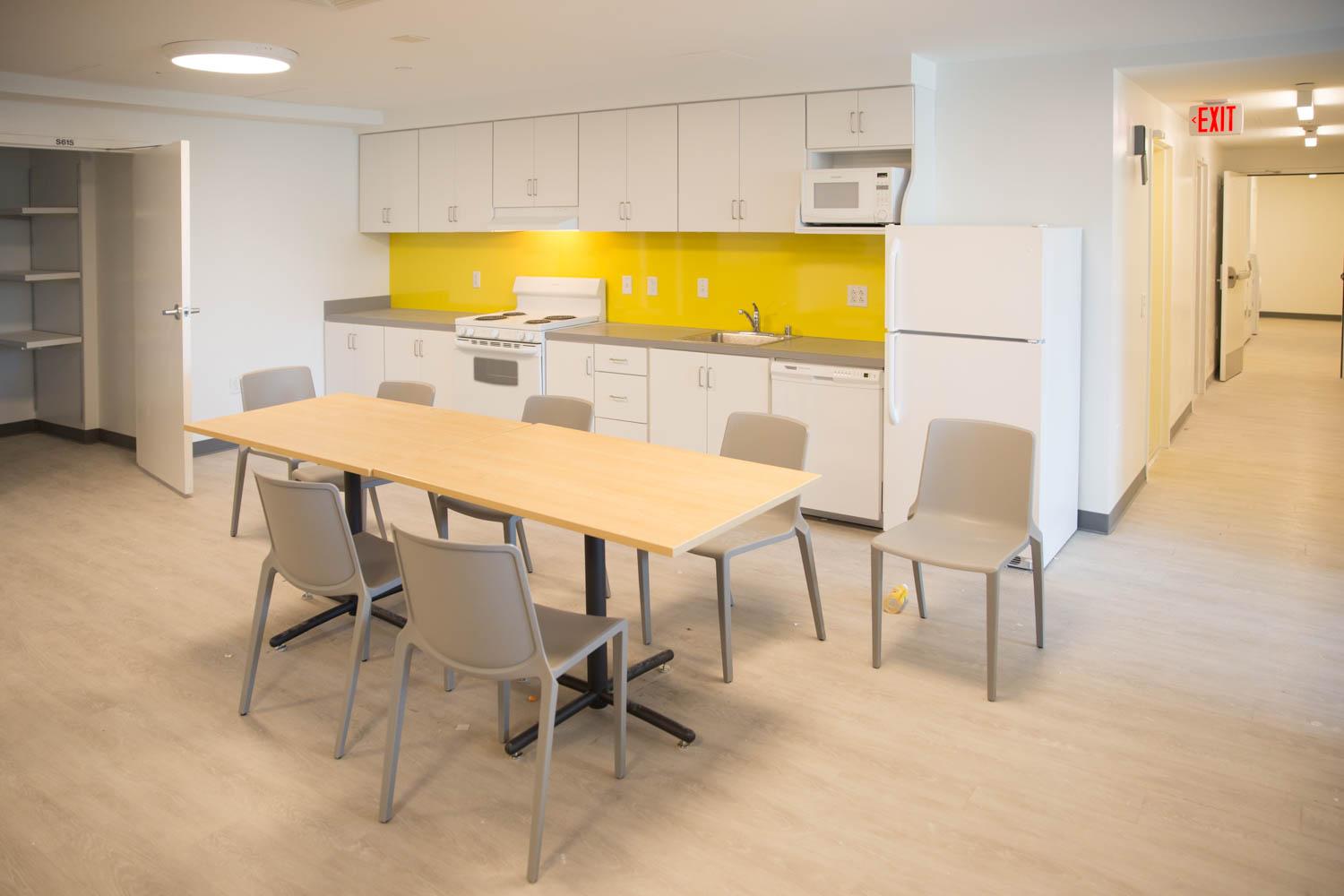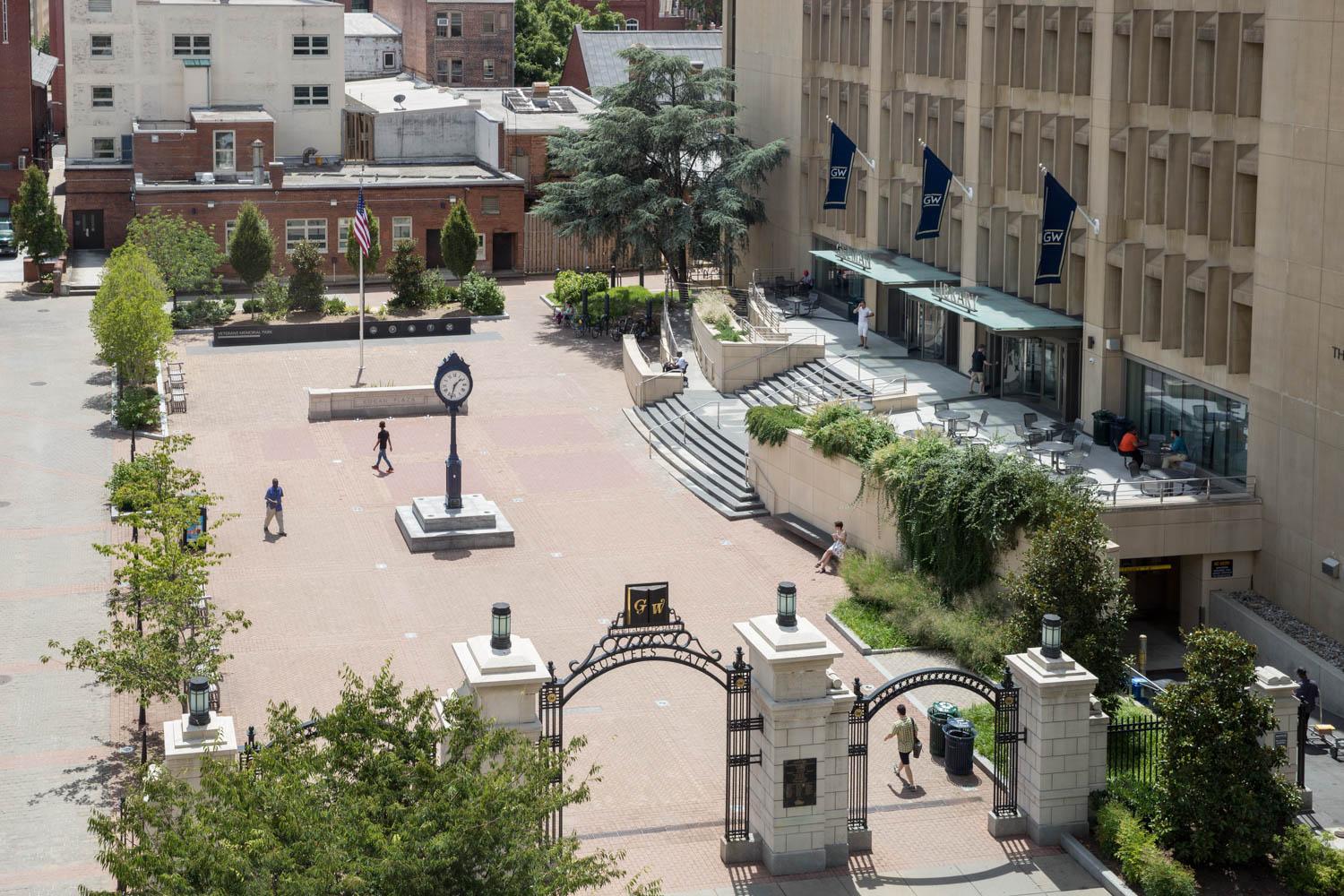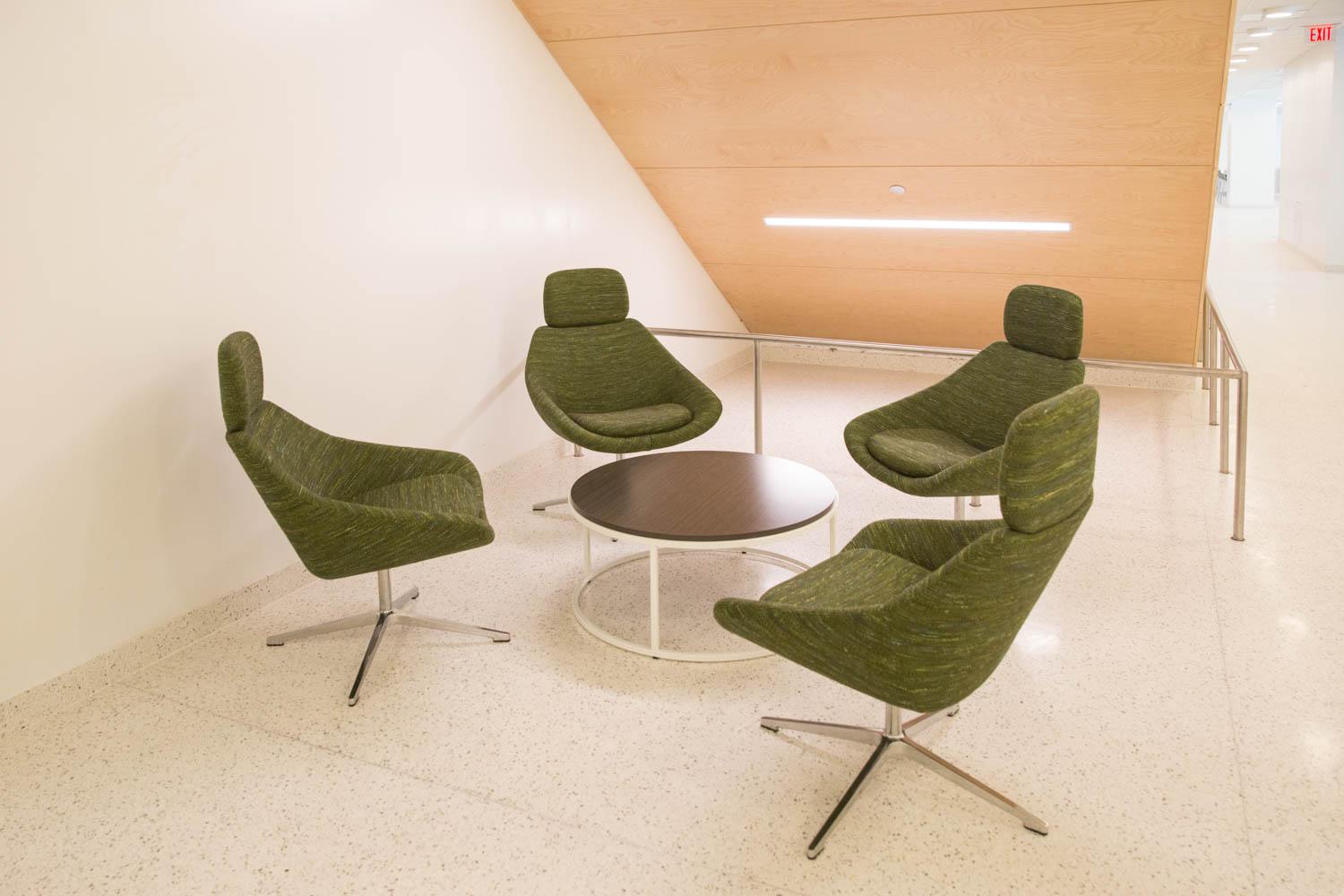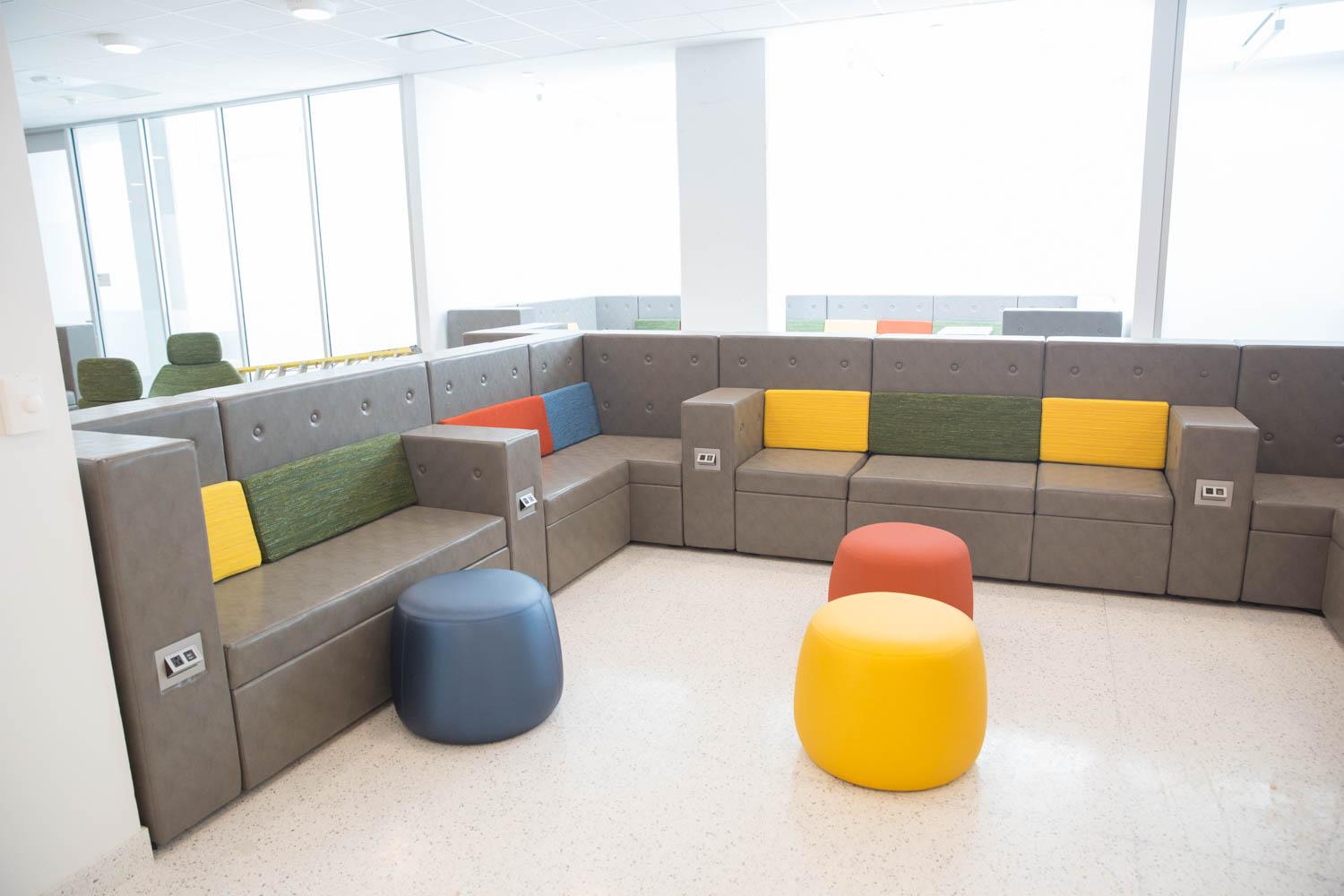By Ruth Steinhardt
District House, the George Washington University’s newest residence hall, opened Saturday after a major renovation incorporating and expanding three existing buildings.
District House features 40,000 square feet of new student space, including performing arts space, conference rooms, lounge and study areas, and new dining venues. With almost 900 beds, it has the second-largest capacity of any residence hall on campus and will house mainly sophomores and juniors.
The building also is energy efficient: It is lit entirely with LED rather than fluorescent lights and features a green roof. Low-flow faucets, showerheads and toilets enable a potential of more than 40% reduction in water use compared to traditional models. Every million gallons of water saved avoids about 1.95 metric tons of carbon dioxide emissions.
Assistant Dean of Students for GW Housing and Financial Services Seth Weinshel has been leading District House tours since the building “topped out” in May 2015. He likes to start in what he calls a “nontraditional double” on the 12th floor.
“I think this has the best view,” he said on one August tour, opening the door to reveal a sunny vista many Washington renters would envy.
Windows take up nearly an entire wall, providing a sweeping view that extends south over Kogan Plaza all the way to the Washington Monument. A cheerful apple-green backsplash in the kitchen matches the laminated colored doors, which in turn match the pinstripes in the hallway carpet. (In District House, each floor’s design is interwoven with muted and bright elements in one of four colors: blue, green, yellow or orange.)

A "nontraditional double" in District House provides a panoramic view that includes the Washington Monument. (Logan Werlinger/GW Today)
The furniture is GW’s new standard line, chosen with extensive student feedback. Features include beds that can be lifted for more storage space, narrower desks with lockable drawers, and square dining tables instead of round for maximum flexibility.
“We really tried to think through lots of things about how students were going to live in the space,” said David Dent, assistant vice president for facilities and campus development.
Most student residents will live in doubles and four-person apartments similar to those in Shenkman Hall. The north and south sections of the building also hold “affinity housing” units, where 16 or 20 students affiliated with campus organizations will live.
These are spacious open flats, some featuring exposed brick accents and arched bay windows, with double kitchens, flat screen TVs and maximized communal dining and study space. Residents sleep in double rooms and share four-person bathrooms.
Mr. Dent said that the affinity units, like the rest of the building, were designed with student preferences in mind.
For example, Mr. Weinshel said, “the study tables are the exact same as the dining tables, so if students want to put them all together and do a dinner for 40, they can do that.
“We really wanted to build a space that would give students the ultimate flexibility in choosing to live how they wanted to live.”
Residential entrances to District House will be available to occupants only, but the communal, retail and dining spaces on the lower levels are open to all until 10 p.m. After that, a GWorld card will be required for entry.
The lower levels feature bookable student conference rooms and bright modular furniture, with plenty of built-in electrical outlets for phones and laptops. There are special spaces, like a public bike storage unit with a full repair toolkit and pump available, and an immaculate dance studio with a professional-grade sprung floor. Skylights make the underground space feel open to the air.
The lower level also features The Store, an on-campus pantry for students to combat the problem of food insecurity on campus.
“When we talk about meeting student needs, that’s part of it,” Mr. Weinshel said. “At a place like GW, you don’t think about that as being an issue—but it is for some students.”
To reserve space at District House, visit the Center for Student Engagement.
For GW Residence Hall Association updates, please visit www.gwrha.com.



